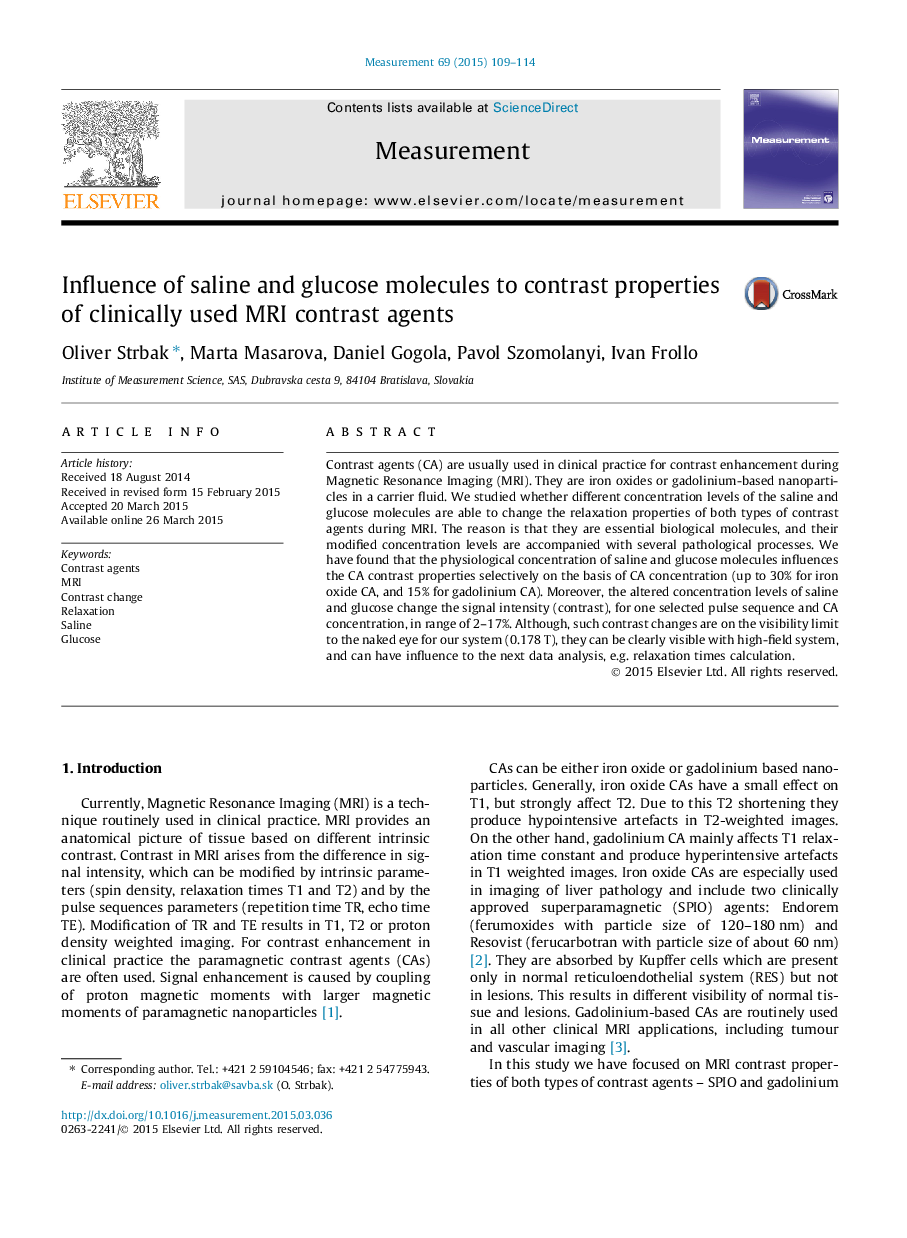| Article ID | Journal | Published Year | Pages | File Type |
|---|---|---|---|---|
| 729731 | Measurement | 2015 | 6 Pages |
•Saline and glucose influence on the properties of MRI contrast agents is studied.•Their modified concentration levels are accompanied with pathological processes.•Physiological concentration affects contrast on the basis of agent concentration.•Altered concentration affects the signal in range of 2–17%.•Such influence can affect the final results.
Contrast agents (CA) are usually used in clinical practice for contrast enhancement during Magnetic Resonance Imaging (MRI). They are iron oxides or gadolinium-based nanoparticles in a carrier fluid. We studied whether different concentration levels of the saline and glucose molecules are able to change the relaxation properties of both types of contrast agents during MRI. The reason is that they are essential biological molecules, and their modified concentration levels are accompanied with several pathological processes. We have found that the physiological concentration of saline and glucose molecules influences the CA contrast properties selectively on the basis of CA concentration (up to 30% for iron oxide CA, and 15% for gadolinium CA). Moreover, the altered concentration levels of saline and glucose change the signal intensity (contrast), for one selected pulse sequence and CA concentration, in range of 2–17%. Although, such contrast changes are on the visibility limit to the naked eye for our system (0.178 T), they can be clearly visible with high-field system, and can have influence to the next data analysis, e.g. relaxation times calculation.
